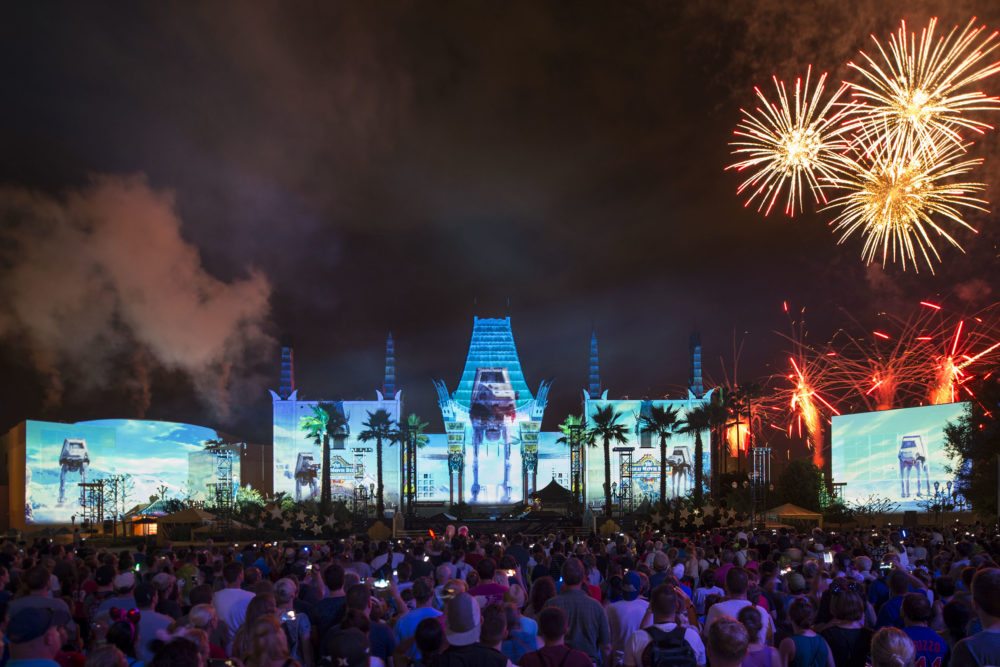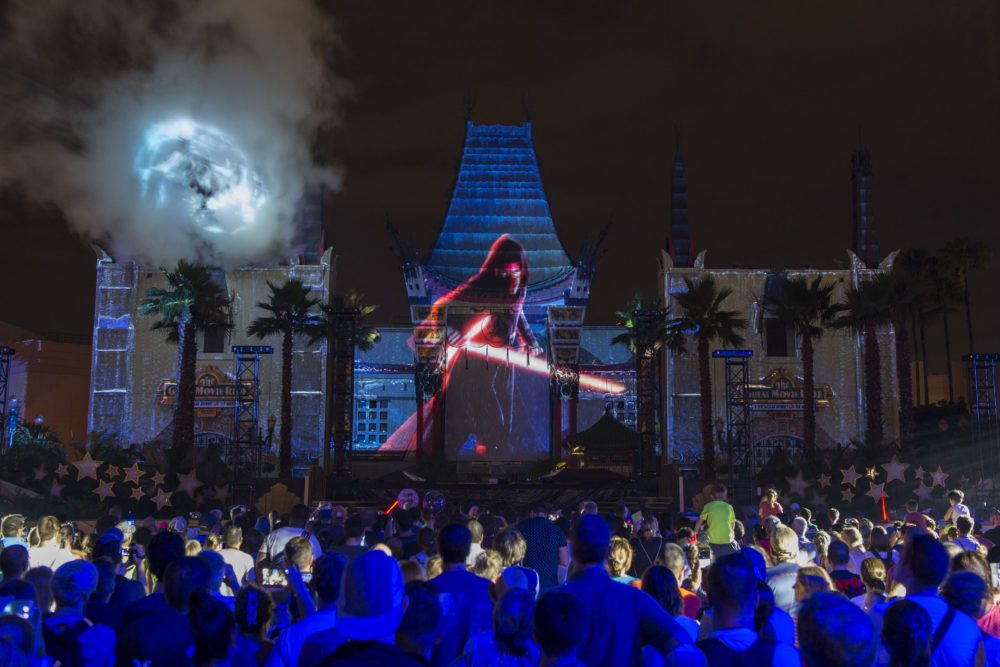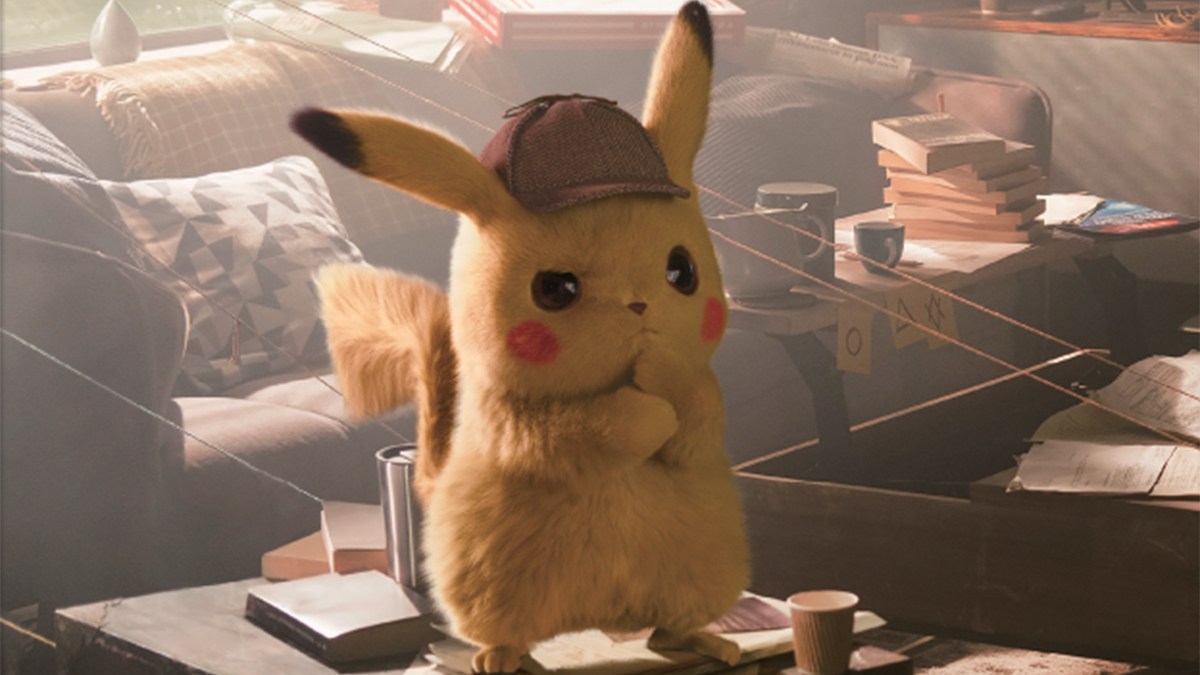
This guest post is an interview between the author, journalist Jon Waterhouse, and Disney Imagineer Michael Roddy about the “Star Wars Galactic Spectacular” currently being performed at Disney’s Hollywood Studios at Walt Disney World in Florida.
Experiencing a Star Wars film within the walls of a theater has the rep for changing lives, one lightsaber swipe at a time. When a young Michael Roddy soaked up the original flick on the big screen in 1977, his tender mind exploded like the Death Star.
Today Roddy, a Walt Disney World show director and writer, lives his dream by taking the influential saga that laser blasted his imagination, creating something new, and taking it outdoors. As director of “Star Wars: A Galactic Spectacular,” a new nightly fireworks show at Disney’s Hollywood Studios in Orlando, FL, Roddy helps us revisit the treasured universe in an unprecedented way.
Using tapestries of explosive bursts, mammoth projections, lasers, and 7.1 surround sound, Roddy and company wrap guests in an immersive experience, zipping across the Star Wars universe and tapping the well of characters, events, and music from all seven films.
We recently chatted with Roddy about the show’s behind-the-scenes magic, his favorite moments, and the best place in the park to savor the spectacular.
Q.: Give us a little background about the show.
Michael Roddy: “Star Wars: A Galactic Spectacular” is a project that’s very dear to my heart. It combines a lot of different technology. It combines projection mapping, because Star Wars is such a visual property. It combines practical effects like lasers, fireballs, and pyrotechnic explosions. It combines state-of-the-art fireworks and big fireworks. We’re firing 8- and 10-inch shells, which are pretty huge. It’s all tied together with John Williams’ iconic music: a selection of the best of the best of John Williams. At the heart, it’s also about the great storytelling and emotions that we have to the Star Wars brand. We start the show at the Chinese Theater (at Disney’s Hollywood Studios). Star Wars premiered (at the real Chinese Theatre in Hollywood ) in 1977. We turn the Chinese Theater into the Chinese Theatre of 1977 with the Star Wars banners hanging proudly. Then the show erupts from the Chinese Theater and fills the nighttime sky. In the past, you were only able to experience that by going into a darkened theater, looking up at the screen, and being transported to a galaxy far, far away that way. And now that galaxy far, far away comes to you. It immerses you and envelopes you. There’s surround sound, and you hear the iconic sounds of Star Wars as TIE fighters streak by you, the Millennium Falcon jumps to hyperdrive, and lightsabers hum. You see and feel the explosions. You hear Darth Vader’s breath surround you. It really is an immersive and emotional experience, because everyone has an emotional connection to Star Wars. Whether you love the Jedi, the droids, or, in some cases, the Sith, everyone loves Star Wars.
Q.: What about the show’s story arc?
Michael Roddy: We take you through a couple of different buckets of story. First, we set the tone of 1977 to today with just a look at all of those great characters that you love, whether it’s Luke Skywalker, Han Solo, Obi -Wan Kenobi, and the droids C-3PO and R2-D2. And then we take you to the beginning of the original Star Wars to a section we call “galaxy in peril,” which showcases the fact that in the Star Wars galaxy there’s unrest. There are huge groups of people who are taking advantage and creating political unrest, whether it’s the Imperials or the First Order. And we take you through some of these conflicts where you see the attack on the Rebel blockade runner or you see the flametroopers attacking the village on Jakku. We see the Hoth battle with the Rebels doing their best to try and thwart off the AT-ATs. Then we show the Death Star battle from Return of the Jedi, showing there’s this group that’s trying to fight back. That kind of ends that section, and then we go into our “hero’s journey” section where we focus on our heroes that start in the most unlikely of places. Whether it’s a farm boy looking out on the twin setting suns on Tatooine or a scavenger out in the junkyard of Jakku, they would never think in a million years that they’d be heroes in the galaxy. We see how they’re just starting their journey. To me, that’s really when it becomes personal to the audience. Then we jump to the heroes that support them: the Han Solos, the Obi-Wan Kenobis, the Finns, the Poe Damerons. And then we go into a section that’s really about the majesty of the Force. There’s this power that’s out in the galaxy that surrounds us and penetrates us. On the flip side, there’s also the dark side, and that’s where we take a look at Darth Vader, Emperor Palpatine, Darth Maul, and the Sith. And that all combines together to a final galactic battle where we switch between the Death Star trench and the race toward the two-meter shaft, and also Poe Dameron’s attack on Starkiller Base. And then we blow up Starkiller Base with a 150-foot fireball. Then we go into the celebration of Star Wars that no matter who you are, you can make a difference in the galaxy.
Q.: What goes into planning a production of this size?
Michael Roddy: We absolutely knew we wanted to have something ready for this summer. We started talking about it probably right before The Force Awakens opened last December. We were wondering how to introduce the newest Star Wars characters and brand into Hollywood Studios. We wanted to make sure it was the right fit. That’s one thing that we’re really cautious with at Disney; is it has to tell a story. We don’t just leverage things to leverage things. Again, it’s about connecting to the audience. We have a saying around here: “Touch every heart.” And we believe in that. So we looked at what was the best way to bring those iconic moments to life. We started off small with some character experiences, which are fantastic. But then we said, “OK, how do we create something that everyone can see and really makes you feel the celebration and emotion of Star Wars?” And we landed on a spectacular. And we started collecting the tools for the toolkit. One of the things about this show is it’s not a fireworks show, and it’s not a projection show. It’s a combination of all of those elements to create a spectacular. We also had to start working with some of our partners at Lucasfilm and ILM, which have been incredible. They opened up their vaults and gave us their models. And one of the things we’re really proud about is we actually have animation in this spectacular that you can only see here that was created specifically for us. It’s different views of classic battles and moments you know very well, but we’re showing it from a different angle because that’s what works well in our kind of presentation. We started with the music because we knew that was the foundation. We worked with John Williams’ music editor to put together the perfect combination of (music). One of the things I always said was, “When we’re done with this, if we never add fireworks, projections, or anything to this, I want this piece of music.” And that’s what we have.

Q.: Is there a moment in the spectacular that never fails to move you?
Michael Roddy: There is. It’s really hard because I love it all. But I also had to put myself in the shoes of several different kinds of audience members to create these scenes. My personal favorite is when Darth Vader appears because we don’t see him. We hear him first. We hear his breath in the darkness, and it’s such a great way to introduce the character to this presentation. I still remember as a little kid when he stepped out on the Rebel blockade runner and what the mystery of that character was. You knew immediately that he was the bad guy. Now I get to see the whole audience tense up as you hear his breath in the darkness. Then you hear this swell of cheers because they know he’s coming. He’s become such an icon. Star Wars is our mythology. Just to be able to do that to an audience and hearing them respond, and me getting the same chills I got in 1977 when I was a little boy watching the movie for the very first time is my favorite part.
Q.: Being a lifelong fan, what does it feel like to be able to put your hands in the Star Wars universe?
Michael Roddy: Oh my gosh, I’m so thankful. I’ve been telling people every day that I worked on this. I said I’ve been planning and rehearsing this show for 39 years. Ever since that little boy saw Star Wars, that has led me to this. And I believe that. Star Wars has been with me my entire life. And the amount of time that I played with the action figures; drew X-wings chasing TIE fighters; drew the Millennium Falcon; read the comic books or the novels; I bought the movies on DVD and watched them over and over again; it’s all prepared me for being able to do this job I’m doing right now. And I’m very thankful.
Q.: Where’s the best place in the park to watch the show?
Michael Roddy: The perfect viewing is at the center of the hub at Disney’s Hollywood Studios. That way you get to see all of the projections, fireworks, and all of the effects. But the other thing that’s really great about this show is that there are so many hidden moments. We want you to come back because you can’t take it all in at once. It’s such a large vista landscape. But definitely at the center of the hub at Disney’s Hollywood Studios is the best place to see “Star Wars: A Galactic Spectacular.”

The new nightly Star Wars fireworks show, “Star Wars: A Galactic Spectacular,” combines fireworks, pyrotechnics, special effects and video projections that turn the nearby Chinese Theater and other buildings at Disney’s Hollywood Studios into the twin suns of Tatooine, a field of battle droids, the trench of the Death Star, Starkiller Base and other Star Wars destinations. The show also features a tower of fire and spotlight beams, creating massive lightsabers in the sky. (David Roark, photographer)




This looks awesome. Disney always does a great job.
Love this !